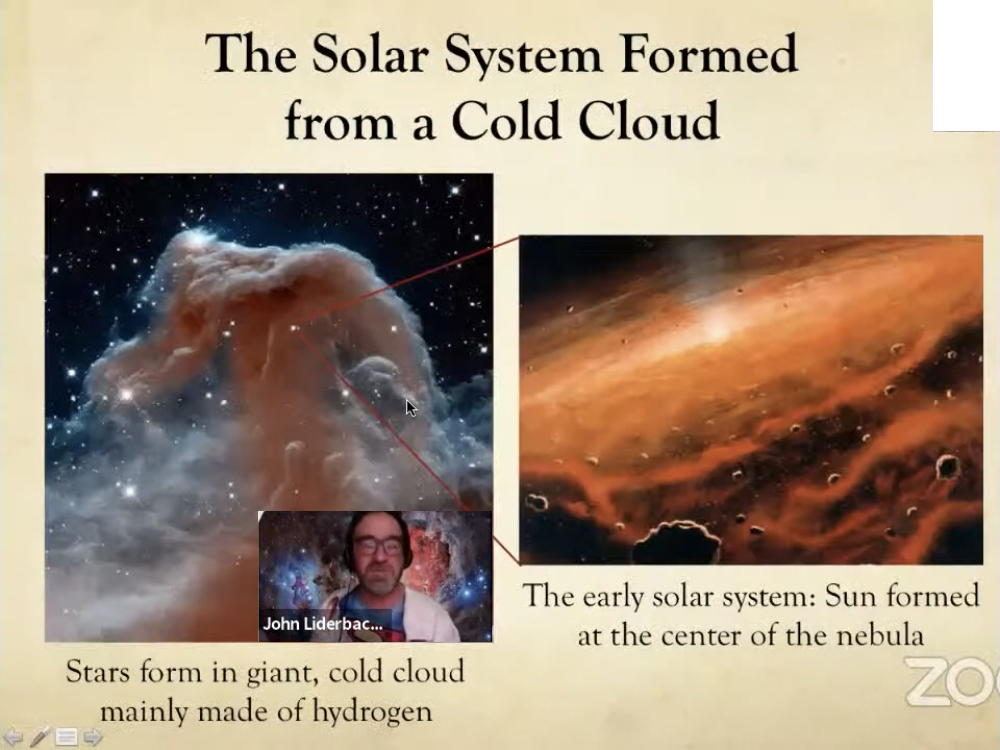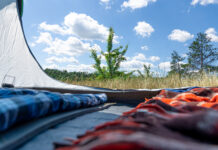
During my childhood, I often gazed upon the night sky and stared in awe at the moon that was seemingly following me. After grasping the concept of distance and sadly realizing the moon was not following me, I still looked up at the moon to admire its beauty. Ever since, I wished I could witness it up close, and on Jan. 21, I was finally able to bear witness to the moon in all its glory — albeit virtually.
The Department of Physics and Astronomy, alongside the Riverside Astronomical Society (RAS), hosted an interactive and fun virtual stargazing event of the moon. It was co-hosted by Xinnan Du, who is in charge of outreach for UCR’s Department of Physics and Astronomy, and John Liderbach-Vega, outreach director for RAS. Alongside the two, members of the RAS such as Jose Castro, Brian Cox, Manny Leinz and Alex McConohay could be seen each giving a tour of specific parts of the moon later on.
Du also introduced the chat moderators, who were tasked with answering chat questions and ensuring a safe space for everyone. These moderators consisted of UCR graduate students: second-year Garret Lopez, third-year Yongda Zhu, fourth-year Jessica Dopel, Rudy Garcia, first-year graduate student at UCLA Franco Iglesias and Cheryl Wilcox, a longtime RAS member and middle school teacher.
The event started with the first trivia question of the night: “When you see a full moon, what are the relative positions of the sun, moon and the earth?” This was answered by Lopez who explained that when the moon is full, it is the furthest away from the sun. He also explained how the Earth’s orbit is connected to the moon. Due to some technical difficulties regarding the inability to screen-share, panel members answered questions from the live chat, explaining what blood moons, tidal locks and moon orbits are.
A member of RAS showed viewers the Straight Wall on the moon, followed by McConahay who gave viewers a live view of the moon and the Southern Highlands, an area on the moon with a high number of craters. It was very interesting learning the names of the areas on the moon and its history. I was shocked to learn about The Mare Imbrium and Montes Apenninus, presented by Leinz, which are moon seas and moon mountains. Leinz also pointed out the area in which the Apollo 15 mission landed, which was very cool to see.
The most interesting part of the night was when Linderbach-Vega gave viewers a story time and advised viewers to get some hot chocolate and snuggle up. Linderbach-Vega explained how the sun formed, how planets formed from “seeds” and the formation of Earth and the moon and its craters. Cox then discussed lunar impact craters, some as old as 2,000 years old. Some of the craters Cox discussed were Hercules, Atlas, Theophilus, Cyrillus and Catharina. Cox also pointed out all these craters and gave brief histories of the moon. It was very informative and interesting to learn about.
One of the last parts of the night consisted of another set of Q&A questions, where six-year-old Alice asked why the moon appears to be moving away. Leinz answered by explaining that the moon affects the earth via tides, which makes the earth slow down a little bit and results in the moon slowly moving away.
Moira Stangeland asked, “If the moon and the earth were bombarded, why don’t we see as many craters on Earth than on the moon?” McConahay explained that the reason we don’t really see many craters is due to the fact some of them are in lakes and forests or are affected by plate tectonics.
Lastly, the event concluded with the sharing of a Google form link for attendees to be entered into a raffle to win 1 of 4 astronomy 2021 calendars. Overall, the event was very informative and interactive. It was great to see so many space enthusiasts interacting with each other. The next stargazing event will be held on Feb. 11 on Orion and the winter sky.







